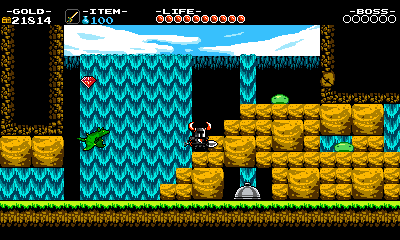I wanted to quote this at the top of the new page (for you 50-posts-per-page people).Dragon's Dogma is similar to this, but with a more complex system. It's an action RPG with a ton of elements, but it's never really that intrusive (well, it can be, but only if you decent that it should be).
You start off in an area that takes less than 10 minutes to beat. Here's how it goes down.
Th game immediately sets you off in a pre-determined Fighter class, which is the most basic and the easiest way to guide people into the game. That character is joined by a Pawn, which is an AI controlled character that comments on the surroundings. It's kinda constant, but it's done in such a manner that you get tips depending on the area you are in, or what you are fighting - goblins hate fire and such.
So anyway, the game leads you through a path where you learn how to fight different enemies. Ground combat is covered with the goblin fights, alongside how to utilize items (there's a barrel you can pick up and throw during the second fight, right beside the larger/greater goblin dude). Sky battles are covered through a fight with the harpies, and then they combine together, making you use the terrain to get at the harpies while managing the goblins below.
Then you fight a boss, a chimera, where your pawn tells you to climb away and hack. You have the support of other AI characters and more pawns, so while it looks daunting, it's actually not so bad, and your characters play off you and work in tandem. Even the boss teaches you to aim for weakpoints on monsters by stopping certain attacks once a head is cutoff.
There's a few problems here and there, but there's a lot more to that, and the beginning of the game that makes Dragon's Dogma a bar for good game design in the modern days.
Edit: I forgot to note the items system. See, you can combine shit to make better, laster longing shits. At the very start, you see some boxes, and because you are programmed as a gamer to smash everything and anything, they give you the reward of a herb. You look at your options menu and are about to eat it when, what's that? A combine option? Can't use that now, but hey, I know it's there so I'll come back to it later. I believe the Pawn even says something about that as well.
Also, there's a very obvious ledge you can grab, and if you make the jump, you get a reward for exploring. If you don't, you don't even take damage from the fall, you just have to walk up the way again and attempt a second time. I didn't know this until my second playthrough, but if you pay attention to the game, it will reveal many secrets without having a blinking arrow on screen.
Excellent analysis of the tutorial level from Dragon's Dogma. This is the kind of response I was looking for in this thread -- not just commentary on how Shovel Knight handles tutorials, but also commentary on how other games handle their own tutorials.
Also, I keep hearing great things about Dragon's Dogma. Maybe I'll check that out soon.


